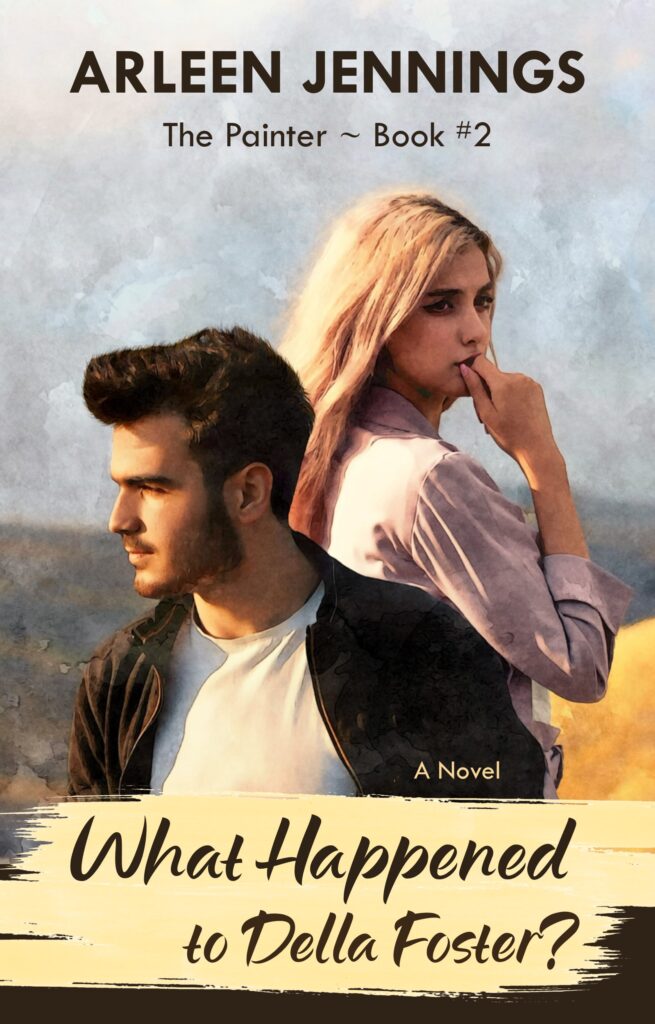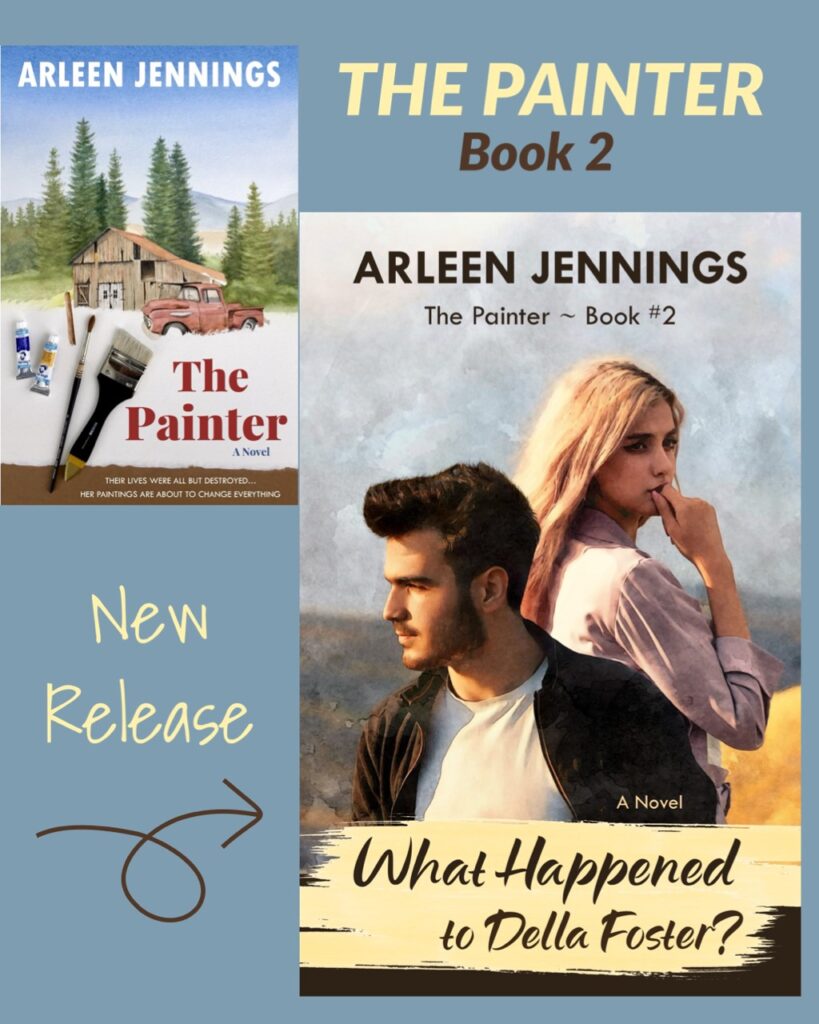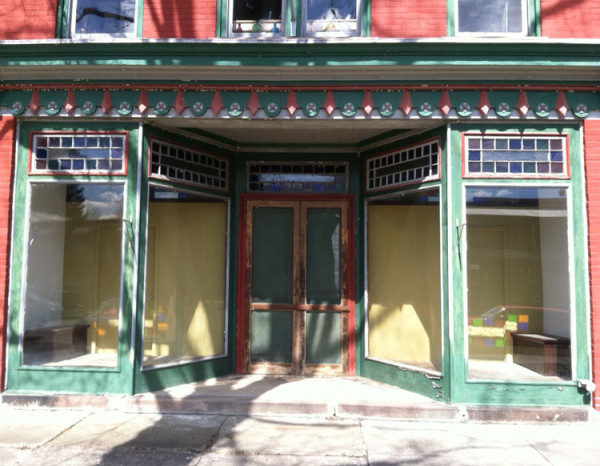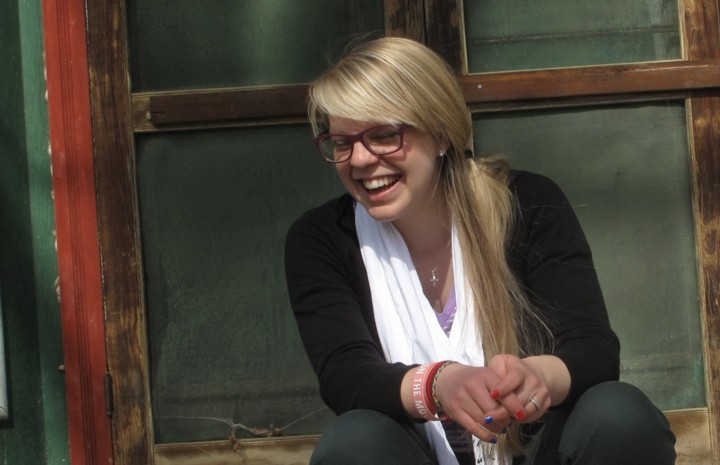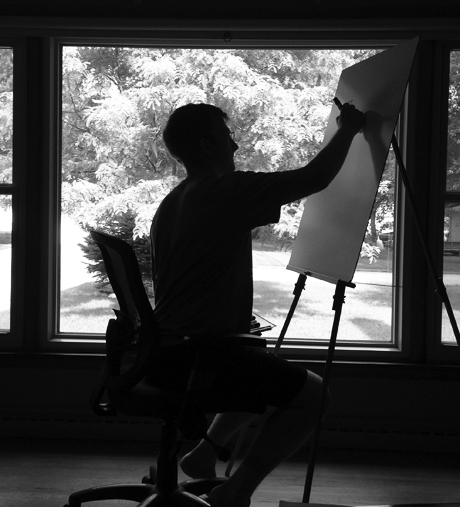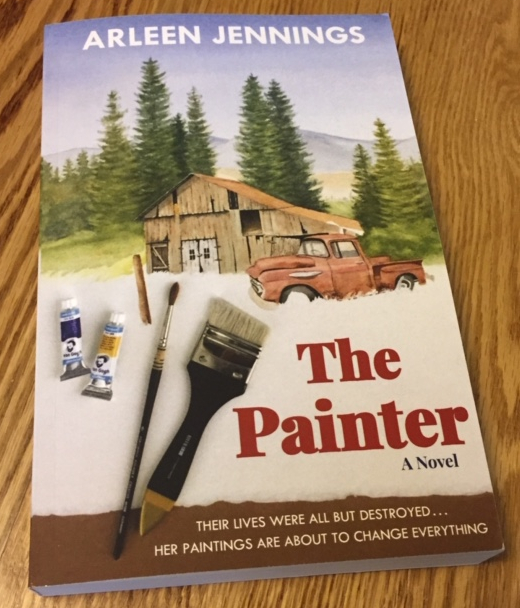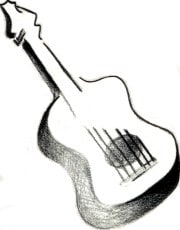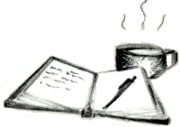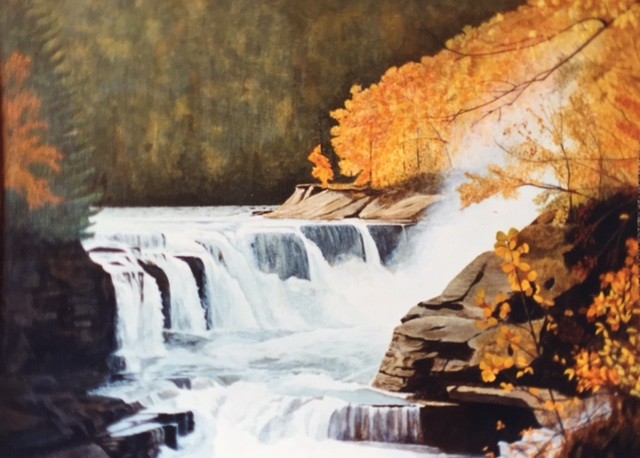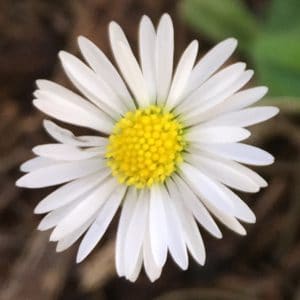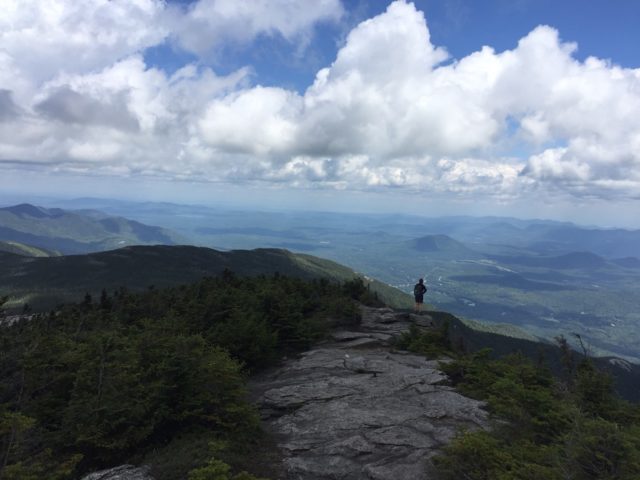Claire and Chase are still picking up the pieces from the fallout at the memorial—and falling deeper in love—when the unexpected happens. Another painting changes.
A simple painting of a childhood home leads to the discovery of a family’s heartbreak. Della Foster has been missing for twenty years. What happened to her? If she’s alive, why hasn’t she come home?
When more paintings change, Claire assumes there should be a connection. But if there is, it’s not obvious.
While Claire pursues these new, albeit vague, leads, Chase finds himself in a world of trouble and hurt. His Uncle Brad runs into legal problems with his former employer. His father, Roger, has a destructive secret that is forced into the open. A secret that could cost them the ranch, or their lives.
Join Clare as she fights for Chase and his family, while her paintings uncover more than she bargained for. Will the missing pieces fall into place? A great deal depends on how willing those involved are to come clean about their pasts. ~ ~ ~ To whet your interest, the first chapter is below. 🙂
Chapter 1
After the frightening incident at the memorial, Claire thought Chase seemed on the road to recovery. Part of that initial healing came from his father’s drastic change of heart toward him for the good. Yet truthfully, she knew Chase didn’t expect it to last. How could it? Ten years was a long time to harbor bitterness and resentment, especially when those same emotions held more than one heart captive. The roots were deep, woven together like plants fighting to survive in a pot that was too small.
However, Claire’s concerns were closer to home. How much had those heart-breaking letters, including the one written to her, and then the attempted suicide, affected Chase? And even more, how much of an impact would they have on their budding affection for each other? Only time would tell, but she feared it was more than Chase was able or willing to admit at this point.
Claire also knew it would be hard for their relationship to move forward in a healthy way without allowing time for Chase and his family to come to terms with all that had happened. So, even though she wanted him to come work for her father, she accepted the fact that it’d be more advantageous for him to stay in Ten Sleep. For that reason alone, they agreed to take turns driving through the mountain pass between Buffalo and Ten Sleep as often as possible, so they could still spend time together.
In the meantime, Claire kept her morning schedule at the barns where she helped train the horses with her dad, Paul, and her youngest brother, Trevor. She also continued to spend her afternoons painting in the loft of her family’s cabin. Thankfully, for now, her parents had not asked her to move.
The summer festival season was over, and Claire decided not to participate in any of the fall events, so there wasn’t an urgent need to crank out more paintings for another show. However, she did have several commission jobs that needed to be done, so she decided to use this time to work on those. She had three paintings completed and delivered by the end of the month. Life was good and things seemed back to normal.
Another week passed, and Claire was pleased with how her next commission had turned out. The painting was of a young man who looked to be sixteen or seventeen, with thick black hair and a huge smile. His plaid, button-down flannel matched his dark umber eyes, and he held the reins of a beautiful, tan American Quarter Horse. Once it was matted and framed, she called the people who commissioned it to see when they could come.
The woman came alone the next afternoon. When she saw the painting, tears immediately welled in her eyes. As if trying to stifle unexpected feelings, she covered her mouth with a trembling hand.
Claire was surprised by this reaction and shot a look at the painting to see if any details had been altered as some had in the past. Then to hide her amusement at the absurdity of that thought, she quickly looked away, not wanting to offend her guest.
Of course, the painting had not been transformed. Her early summer mystery had been solved and there would be no reason for confusing changes to appear again.
Claire shook her head to force her thoughts back to the unsettled woman standing in her loft. After giving her a moment to deal with whatever emotions had frazzled her, Claire stepped beside her and said, “Evelyn, is something wrong with the painting? Your reaction is not at all what I expected.”
“It’s all we could ask for and more. You did a wonderful job, Claire. Thank you.”
“Then what’s wrong? Those don’t look like happy tears.”
“It’s kind of a long and sad story,” Evelyn said, as she pulled a tissue from her purse.
Claire had learned to become a good listener over the past few months. And though this particular painting hadn’t changed, she knew how important it was at times to have an ear to bend. “I have time, if you’d like to share.”
“Isaac here, loved being outside. We had several cows, goats, chickens, two horses, and a dog.” Evelyn swept her hand over her son’s face. “His lifelong dream was to become a veterinarian. The problem was, we fell on rough times. My husband got cancer and eventually lost his job. We ended up selling our farm and moved to Billings, Montana so we didn’t have to travel so far for Craig’s medical treatment. I was able to get a decent paying job, but it wasn’t enough to cover the cost of his treatment and meds. He was starting to get better but the meds were so expensive that Isaac willingly postponed college for a year so he could get a job and help me with the bills.”
“That was super thoughtful of Isaac.”
“No doubt, but the thing is, Craig got better; but then Isaac decided to put off college for another year. He said he wanted to do some traveling. We weren’t happy with that choice, but he’d been so helpful, we felt it’d be wrong to push him. He left last summer.”
“If he was helping you with the bills, how did he have enough money saved up to travel for a full year?”
“We have no idea.” Evelyn’s sigh was long and weighted with grief. “His lack of communication was totally unexpected. We don’t even know where he is. At first, he replied to our texts and calls, but by Christmas his phone was disconnected and we lost touch with him. We haven’t had any luck in our search for him and unfortunately, we don’t have the money to hire a private investigator.”
Claire wasn’t prepared to hear such a story, especially when the painting hadn’t changed, but seeing Evelyn’s grieved expression, she felt she should offer something. “Isaac’s actions and lack of communication are more than peculiar, especially in the light of how helpful he was during his father’s cancer treatments.”
“Craig and I are afraid the only way to justify such actions is that Isaac must have died. Yet we’ve heard no news to indicate that’s what happened, so we can only hope that’s not the case.” Evelyn clenched her fist and her expression soured. “I can’t believe he would do this to us after all we’ve done for him.”
Claire opened her arms and Evelyn moved into her calming embrace. Once she felt her body relax, Claire stepped back. “If you’re so upset with Isaac, why did you commission me to do this portrait of him?”
Tears replaced the anger and she softened. “That way, if he ever does come home, he will know we were thinking of him. And we hoped that including his horse would remind him of his dream to become a veterinarian.”
“Well, until that happens, this painting will be a great memory of better days.” Claire offered a sweet smile, hoping it would help.
Instead, Evelyn crumpled onto the futon and choked out, “I don’t know what I’m going to do. We just found out that Craig’s cancer is back.”
“Oh no! I’m so sorry to hear that.” Claire walked to her easel and brought the painting to Evelyn. “Here, this is my gift to you. I know it isn’t much, but it should help some.”
Evelyn stood to protest. “I can’t let you do that. Look how much money you have tied up in the matting and frame, and that’s beyond the cost of your time and watercolor supplies.”
“I insist. Just be sure to hang it where you can see it every day. It will remind you to have hope.” Claire handed it to her and added, “My mom had a close friend whose son was in the Army. It was the oddest thing, he got married and within a year or two, all communication was cut off . . . I don’t remember the details, but it was like five years of absolute silence. No contact at all and, to make matters worse, most of that time he was stationed overseas so there was no way to go visit him. Anyway, the woman told my mom, ‘It’s like he’s dead. The only difference is that we can’t mourn him and move on.’”
Evelyn looked down at the painting she held in front of her. “That’s exactly how we feel. It’s awful!”
“I can only imagine,” Claire said, “but to finish my story, that’s when my mom said to her friend, ‘But that’s just it. He’s not dead and, until you hear otherwise, you still have hope.’ And since that time, the son has been reunited with the family and the past pain has been forgotten.”
A fresh tear slipped from Evelyn’s cheek and hit the glass. “Thank you for that encouragement and for this beautiful portrait.”
* * *
The next evening, the ringing of Claire’s phone startled her. Not because she wasn’t expecting a call from Chase, but because she hadn’t realized how late it had gotten. She had spent the evening working on a painting of a newer, one-story log cabin set back off a dirt road with the Casper Mountains in the background. She had already added some fun hues of a colorful sunset and laid in the deep blues of the distant mountains. She was adding details to the cabin when his call came.
Claire sloshed her brush in a jar of water as she hit the FaceTime icon. “Hey there, good lookin’. How was your day?”
“Interesting, actually. How about you? I see you’re still painting.”
“Yeah, this one’s pretty straight forward, and I’m making good progress.” She flipped the screen so he could see.
“Nice. I like what you did with the sky and mountains. It’ll keep the painting interesting even though the house itself is kind of basic.”
Claire rotated the screen back to herself before saying, “Said like a true art connoisseur.”
“Just a fast learner, that’s all.” He winked.
“Smooth. Real smooth.” She grinned. “Well, anyway, nothing eventful happened here today, so why don’t you tell me about your ‘interesting.’”
“As you know, my dad still doesn’t spend much time working on the ranch, even though it’s more than it was. For the most part, I’ve minded my own business and kept with my normal tasks, which don’t include him. Today he joined me in the workshop and helped me fix the broken axle on one of the bigger tractors.”
“That must have been nice to have the help.”
“It was and we got a chance to talk about a lot of stuff. He even apologized . . . again.”
“That’s great news.” Claire brought the phone with her to the futon and waited for Chase to continue. When he didn’t, she asked, “So what’s troubling you then?”
“Ha. Even with a mountain between us, you can always tell when something’s bothering me.”
“It helps that I can see your face; I’m pretty good at reading people’s expressions.” She crossed her legs and pulled a pillow onto her lap. “I’m all ears.”
“Fine. Dad admitted that he was still having nightmares about the day Johnny died.”
“That’s gotta be tough.”
“Yeah, but what frustrates him even more is the fact that the dream is a relentless reminder that he wasted the last ten years wallowing in self-pity. He even told me that he’d been a stubborn old fool and that he should have gone for counseling years ago. His first session is tomorrow.”
“Oh wow, I didn’t expect to hear that, but I believe it will be a good thing for everyone.”
“I agree, except I think he’s using his willingness, in part, so that he has sway in pushing me to go, too. He said that he and Mom talked about it and that after my suicide attempt at the memorial, they are fearful that if I don’t deal with the bitterness that it will destroy more than m—” Chase’s words trailed off.
Claire agreed with his parents but didn’t want to push. “And what do you think of the idea?”
Chase’s tone abruptly changed. “I think he’s the last person on earth who should be giving me advice. Just because he’s been reasonable since we’ve found Jack and even apologized, doesn’t erase the years of hell he put me and my mom through.”
Claire cringed as his eyes darkened and his jaw tightened. She knew it’d be best not to reply . . . or so she thought.
Silence stretched between them to the point of becoming awkward.
When Chase finally spoke, some of the anger had dissipated from his voice. “I get what Dad’s saying, but because things seemed to be going smoothly, I assumed that situation was over and done. And anyway, I’ve refused to think about my lapse in judgment. It’s not like I can change it, and no one got hurt.”
Claire wished they could have this conversation in person, but she couldn’t let that comment slide and hope for another opportunity to set him straight. She brought the phone closer to her face and blurted, “Chase, do you even hear yourself? Every single person you left a letter for was hurt! Including me.”
“Wow, so much for being grateful I lived. I’ve gotta go.”
“I am grateful,” she said quickly, hoping he wouldn’t hang up on her. “We’re all grateful, but that doesn’t change or nullify the reality of what hap—”
The screen went dark.
Seriously, Chase? You’re ridiculous. To distract herself from his childish behavior, Claire got to her feet and went to finish cleaning her watercolor brushes before going downstairs.
Needing to settle her racing heart, she grabbed a jean jacket from the hook and went to sit on her front porch. While she sat there enjoying the moon’s reflection on the pond, the wind picked up and clouds started rolling in. It didn’t take long before the stars and moon were completely concealed and an eerie darkness covered the valley below. As her thoughts turned back to Chase, she couldn’t help feeling that the drastic change in the weather matched perfectly with the struggle going on inside her heart. Why does he have to be so stubborn?
With some effort, she squelched the desire to call him back and tell him that his hanging up on her was not only juvenile, but it also proved her point. Instead, she chose to be diplomatic and sent a text to him. ‘This conversation was not about me being grateful. It’s about you and the fact that you can’t come that close to ending your life without accepting the fact that counseling would be advantageous. I know this isn’t what you want to hear, but that doesn’t make it not true.’ Claire added a heart emoji and smiley face to the text to cover the frustration that she felt and to soften the truth of her words. After waiting for several minutes and getting no reply, she went back inside and got ready for bed.
* * *
Despite the fact that Chase hung up on her and hadn’t replied to her text last night, Claire really liked the guy on the other side of the mood swings and knew he was worth fighting for. Purposing to be the bigger person, she texted him a few times that morning. It was close to noon before he finally replied, and she was grateful that his text contained an apology. Things seemed to be back to normal. Claire would be sure not to bring up the counseling again; she knew that was a conversation they should have in person.
Later that afternoon, Claire went to her art studio and found the unexpected. Some of the elements in her unfinished painting were altered.
The first time this happened months earlier, she freaked out. And why wouldn’t she? It was impossible. Someone must have been in her house and switched the painting. A cruel joke, just to mess with her. At least that was what she thought at the time. To make matters worse, no one believed her. Some accused her of lying and others thought she was going crazy. But it was no joke. The painting had, in truth, changed.
The ensuing weeks had put an unexpected strain on her relationships with family, all because she wouldn’t recant her story. That solitary piece of art had turned her life upside down and, for a time, ruined her excitement of being home and working on the ranch. That is, until she met someone who knew the people in the painting.
Her story set Claire on a journey of discovery. By the time the second and third paintings had changed, instead of being fearful, she looked forward to seeing whom she would meet and hearing their stories, too. As those life-changing events started to make sense on a grander scale, they had come together like a puzzle, with Claire herself an integral piece.
That was how she met Chase; he was one of the boys in the first painting. He had grown into a tall, muscular, and handsome man. She smiled at the thought of how that all played out. She certainly wasn’t looking for or expecting to find herself in love with Chase; it kind of just happened, like melting snow in spring.
Yes, Claire realized paintings could change again. But why would they? The mystery was solved, and that chapter of her life was over. Or was it? Were there other things in Chase’s story that needed to be brought to light to further the healing process? After how upset he was at just the mention of counseling, it was certainly possible. Although, with what now filled her watercolor paper, it didn’t seem likely.
She blew out a long, slow breath, trying to quell the nausea that rumbled in her stomach. Once settled, she leaned over the painting to inspect it more closely. Nothing looked familiar. It was then that it hit her: these changes were significant enough that they could mean nothing less than a new quest.
